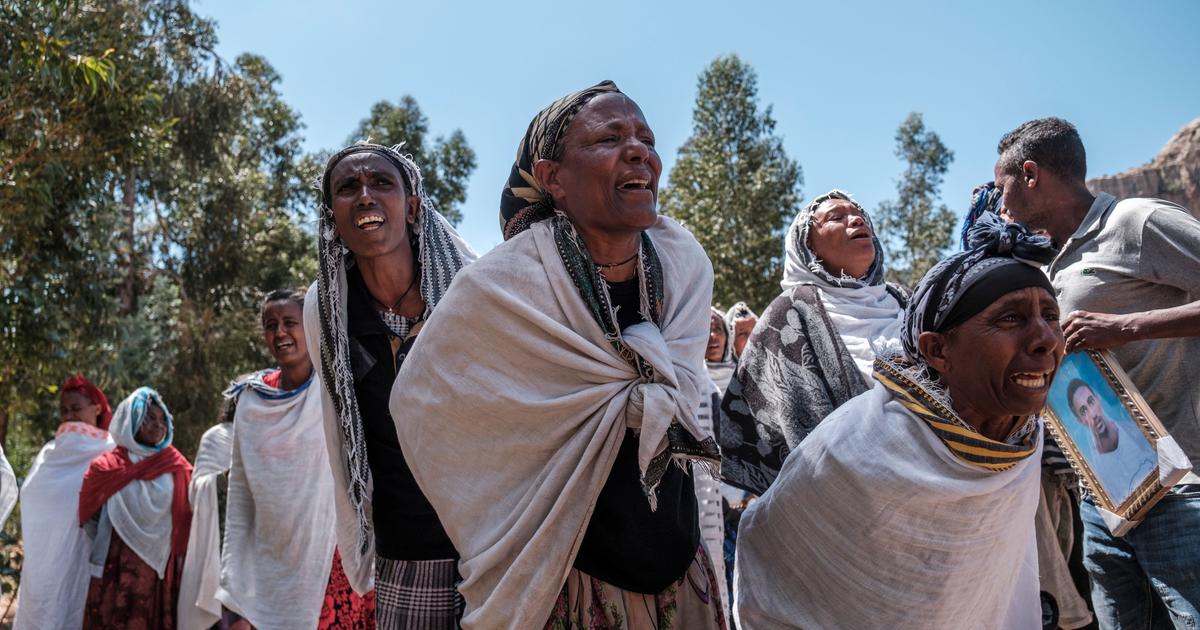United Nations – UN humanitarian chief Mark Lowcock warned Thursday that “a campaign of destruction” is taking place in Tigray Province, Ethiopia,, saying that at least 4.5 million people need assistance and demanding that forces in neighboring Eritrea, accused of committing atrocities in Tigray, leave Ethiopia.
As the Tigray crisis enters its fourth month, Lowcock said, the humanitarian crisis is deteriorating and “several reliable and widely corroborated reports from Tigray … speak of widespread atrocities, involving mass killings, rapes and kidnapping of civilians. , ongoing fighting across the region “as well as the destruction of crops and major agricultural machinery.
EDUARDO SOTERAS / AFP / Getty
Lowcock’s statements at a closed UN Security Council meeting, obtained by CBS News, first pointed out Eritrean forces as fighting alongside the Ethiopian government, and warned of possible famine “if food does not pass and there is no agricultural revival. “
Ambassador Linda Thomas-Greenfield said the United States had sent a “Disaster Assistance Response Team to Ethiopia”, reports Pamela Falk of CBS News. The American ambassador asked the Ethiopian government to support the immediate end of fighting in Tigray and supported Lowcock’s call for “the immediate withdrawal of Eritrean and Amhara regional forces”.
UN spokesman Stephane Dujarric said that UN Secretary General Antonio Guterres also supported Lowcock’s demand.
A press release from the Security Council on Tigray, drafted by Ireland, is still being discussed, council diplomats said, speaking on condition of anonymity because the meeting was closed.
As the fierce struggle is supposed to continue between the Ethiopian and allied forces and those who support the now fugitive Tigray leaders who once dominated the Ethiopian government, the alarm is growing about the fate of Tigray’s 6 million people. No one knows how many thousands of civilians were killed.
Reports of atrocities against Tigray residents have been detailed in reports by The Associated Press and Amnesty International. The federal government and regional officials in Tigray believe that each other’s governments are illegitimate after elections interrupted by the pandemic COVID-19.
In demanding that Eritreans leave, Lowcock said: “It is now perfectly clear to everyone, and openly acknowledged by government officials in Tigray, that the Eritrean Defense Forces are operating throughout Tigray.”
“Numerous well-corroborated reports suggest his guilt for the atrocities,” he said. “The Eritrean Defense Forces must leave Ethiopia and must not be empowered or allowed to continue their campaign of destruction before doing so.”
EDUARDO SOTERAS / AFP / Getty
Lowcock also emphasized that all forces – “and here I include the Ethiopian Defense Forces, the Eritrean Defense Forces, the Tigrayan forces and the ethnic militias from parts of Ethiopia other than Tigray” – must, according to the law Humanitarian International, granting access to people in need of assistance, “wherever they may be.”
He said that many people in rural areas, who represented about 80% of Tigray’s population before the conflict started, remain inaccessible and their situation “is almost certainly worse” than those that aid agencies have been able to reach.
“We have identified at least 600,000 people who we know need help, but who have not yet received any humanitarian aid,” said Lowcock. “But we suspect that the real number of people in need who have not received help so far is significantly higher.”
With harvests and markets disrupted by the conflict, he said “food insecurity is on the rise”, citing “anecdotal reports of hunger”, but saying “the worst is still preventable”.
Lowcock said aid agencies are increasing their response and asked donors to contribute a $ 400 million appeal to Tigray, which will be launched next week.
INTERNATIONAL RED CROSS COMMITTEE / Reuters
The UN humanitarian chief said that Ethiopian Prime Minister Abiy Ahmed told Secretary-General Guterres several days ago – and reiterated to World Food Program Executive Director David Beasley on Thursday – that he is committed to ensuring help reach those who need it.
“This commitment must now translate into more action on the ground,” said Lowcock, emphasizing that an urgent need is to bring communications equipment to Tigray so that aid agencies can communicate with each other.
Lowcock said Tigray may not be the only hot spot in Ethiopia.
“We see warning signs in other regions of Ethiopia, including a military increase on the Ethiopian-Sudan border and the worsening of ethnic conflict in the Benishangul-Gumuz region, from which refugees are fleeing to Sudan,” he said.



